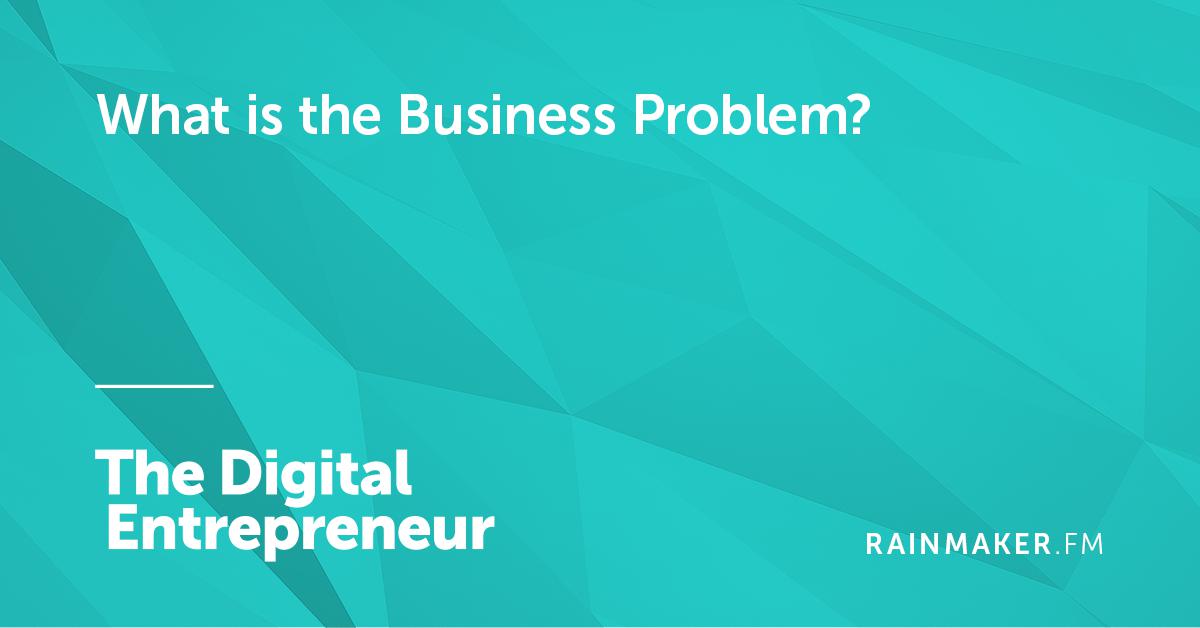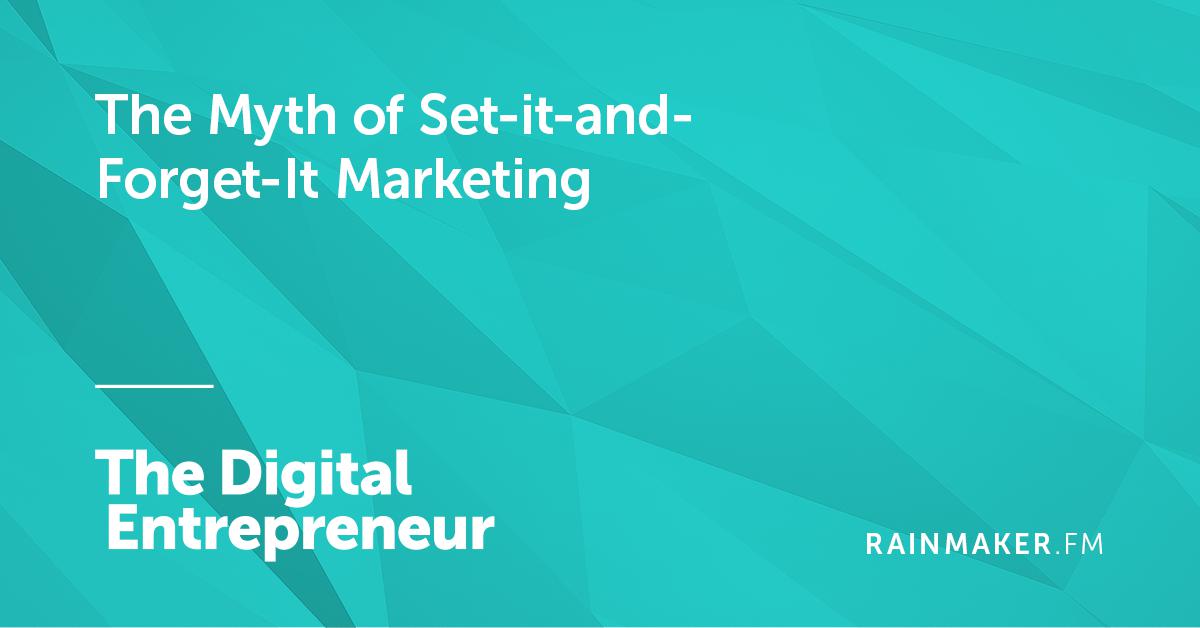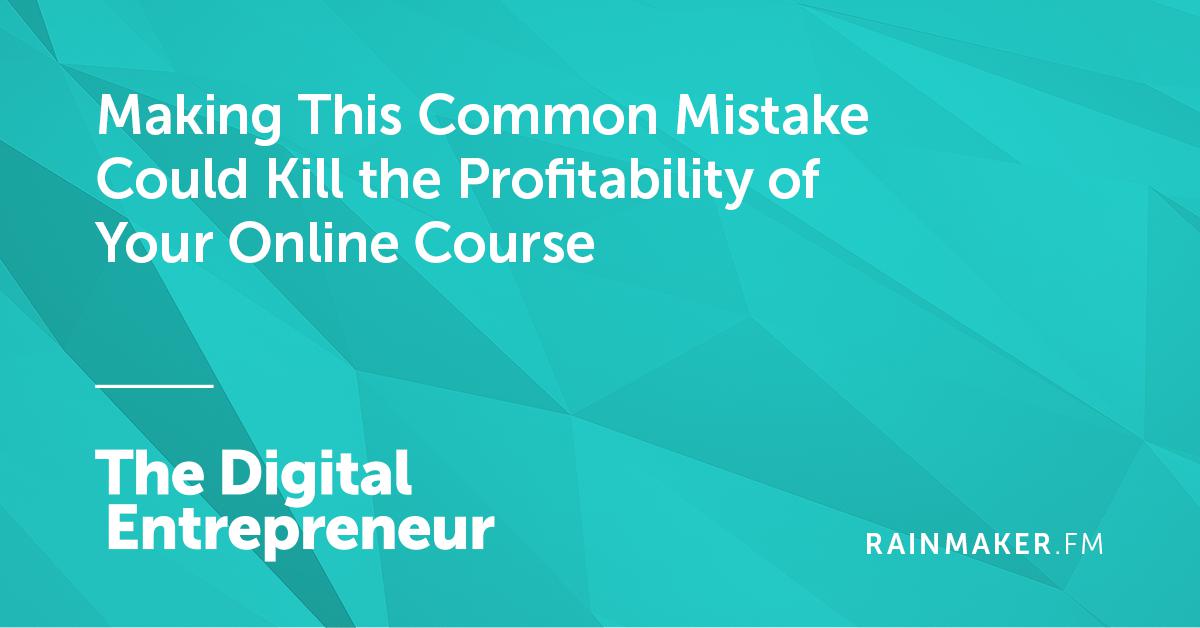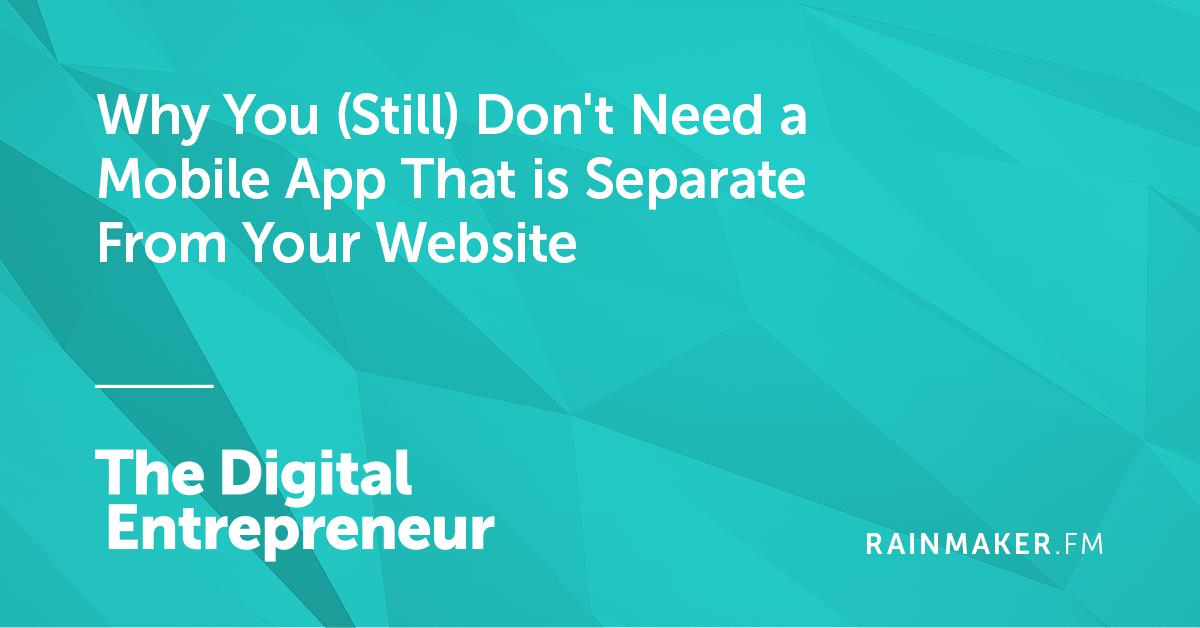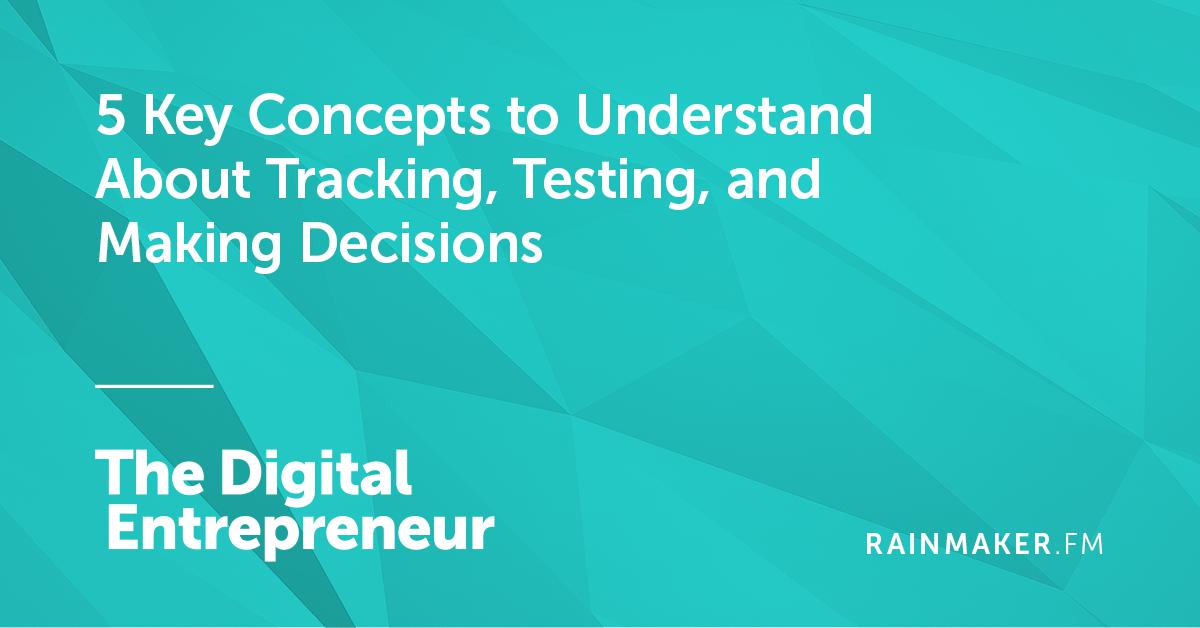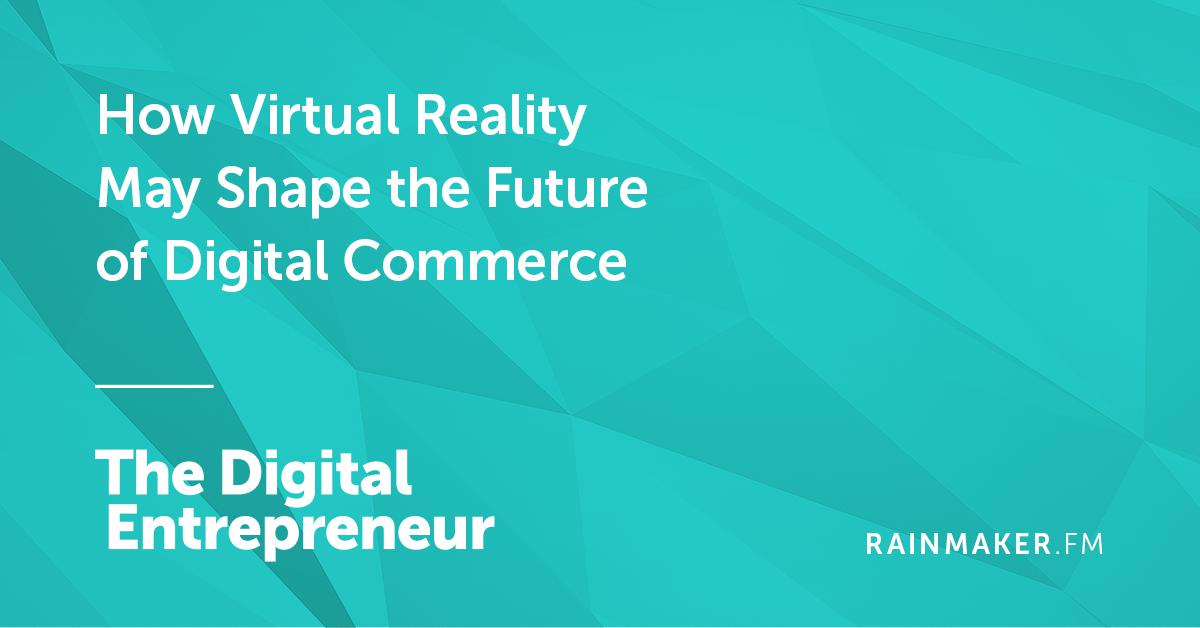
Virtual Reality (VR) has been theorized and fantasized about for decades, perhaps even longer. Many of us have considered it a part of some still-off-in-the-distance future. But what if we told you … that the future is now?
In this 26-minute episode, Brian Clark and Jerod Morris discuss:
- Our own personal (and very different) journeys to VR awareness
- The challenges of integrating VR with the open web
- Why Facebook’s “metaverse” seems inevitable — and what it will mean
- How VR will impact online learning and interaction, and the impact that it will have on online courses and membership sites
- How VR is being used currently, and why it strongly suggests that brands are next
And more. This is a rich, meaty topic that we only scratch the surface of. But even on the surface it’s exciting and will fill your head with possibilities and opportunities, which the smart digital entrepreneur will consider. 
Listen to The Digital Entrepreneur below …
The Show Notes
- Virtual Reality and Learning: The Newest Landscape for Higher Education
- After Experimenting With 360-Degree Storytelling, Publishers Are Going All-In on VR
- Why A Virtual Reality Web May Never Happen
- Digital Commerce Institute
- Brian Clark
- Jerod Morris
And here is an example of the 360-degree video, as promised:
The Transcript
How Virtual Reality May Shape the Future of Digital Commerce
Voiceover: You are listening to The Digital Entrepreneur, the show for folks who want to discover smarter ways to create and sell profitable digital goods and services. This podcast is a production of Digital Commerce Institute, the place to be for digital entrepreneurs. DCI features an in-depth ongoing instructional academy, plus a live education and networking summit where entrepreneurs from across the globe meet in person. For more information, go to Rainmaker.FM/digitalcommerce. That’s Rainmaker.FM/digitalcommerce.
Jerod Morris: Welcome back to The Digital Entrepreneur. This is episode number 14 of The Digital Entrepreneur. I’m your host, Jerod Morris, VP of Marketing for Rainmaker Digital. I am joined once again this week by the founder and CEO of Rainmaker Digital, Mr. Brian Clark. Brian, how are you?
Brian Clark: Not too bad. What’s going on with you?
Jerod Morris: Not much. It seems like in the time since you were with us, which is one episode ago — you missed one episode, you were here the episode before — you’ve been kind of geeking out on some virtual reality stuff. You sent me some links today that were really interesting reading, and we decided to make today’s episode about virtual reality and how virtual reality may shape the future of digital commerce. I’m excited to talk about this with you.
Our Own Personal (and Very Different) Journeys to VR Awareness
Brian Clark: Yeah. When we launched DigitalCommerce.com, Digital Commerce Institute, that was one of the “this is what’s next” type teasers. It’s been something that you can’t escape, the news about virtual reality in general. But I started looking at things in a very specific manner on accident, by listening to a podcast of all things, and got some information that I didn’t know. It got my wheels really turning. Virtual reality has been this bust thing since … Snow Crash by Neal Stephenson is the consummate science fiction novel about virtual reality. It’s also hilarious. There were early attempts in the ’90s at it. There were earlier attempts in the first decade at the turn of the century, and they were disasters because it wasn’t time for it yet. I think to some people that provoked some skepticism.
I also remember that, starting in about 2001, every year was “year of mobile.” Well, guess what? It didn’t happen till the iPhone was invented. Now you can’t get away from it. People who wrote it off and say, “Oh, yeah, you said that last year,” all of a sudden mobile has become the dominant form of traffic. You’ve got major publishers without responsive design at a minimum, much less mobile first. I’m just saying you’ve got to pay attention, because this isn’t going to be like mobile adoption. There’s too much money. The technology is too good. Facebook didn’t pay 2 billion for Oculus for fun or because Mark didn’t know what to do with his piggy bank. It’s a big deal, and we’ll talk a little bit about that. I think it’s going to happen much faster than people think.
I guess that’s really what we want to talk about today. What are some of the signs? What are some of the things you need to be thinking about? Because if you want to get involved at an entrepreneurial level, it’s a good time to do so while disruption and change is happening as opposed to when it’s all figured out, the big players are set, the standards are set, and all of a sudden you feel locked out.
Jerod Morris: Yeah, and I do want to let people know we’re going to talk about some links and even some examples of virtual reality, like some 360 video examples. Go to digitalcommerce.com/podcast and you’ll find the show notes for this episode, How Virtual Reality May Shape the Future of Digital Commerce. All the links and even those videos will be in the show notes. That’s where you can find those, at digitalcommerce.com/podcast.
It’s interesting, Brian, because I actually talked about this with Scott Ellis a couple of months ago. We did one of our Cutting-Edge webinars inside of Digital Commerce Academy and we talked about this, exactly what you were talking about with how you hear about virtual reality right now. Obviously, we’ve been hearing about it for a while, seeing it in movies, and it always seemed like this thing that was way out there. Maybe at some point in the future this would happen. We really are coming to that point where the future is almost now.
It’s not quite ready, because if you click on some of these examples … Like The Washington Post did this cool virtual reality online thing, I don’t even know what to call it, this presentation about Mars. I clicked in it in one web browser and it didn’t work, it didn’t load properly. It was kind of clunky. It worked a little bit better in another browser. I think sometimes people see that and think, “Oh, okay, so this isn’t really all it’s cracked up to be.” But it’s so important to remember that these are early iterations and it will continue to grow and develop and get better.
Like you said, that’s why thinking about it now is so important, because there’s still that big opportunity — not necessarily to be a first mover, but to certainly be an early mover and figure out where this is going, like you said, before everybody else stakes their claim to it.
Brian Clark: Yeah. Well, you have to realize that the first headsets that are out there are on the low end. Only 200 people in the world have an Oculus Rift at this point. This is the technology that the people at Facebook saw — invented by a teenager, believe it or not.
Jerod Morris: Oh my.
Brian Clark: They were so blown away that they paid 2 billion. Two billion for a technology. That’s because Facebook is going to turn into a virtual reality walled garden. If they can dominate it that way … Jeez, you think we have problems with Facebook now? It’s going to get worse.
The Challenges of Integrating VR With the Open Web
Here’s what really got my imagination stimulated about the possibilities: I did not realize that people over at Mozilla, the makers of Firefox, have had this project WebVR, which is a standard for the open web. Any website, with the push of a button and the headset, obviously, becomes a virtual reality experience. We talk about websites being experiences and adaptive and interactive and all that. Well, where do you think this is heading? Again, it may happen quicker than you’d think.
Here’s the key to it, the fact that the open web is a viable possibility due to the work these guys have been doing. Two years ago people thought they were insane, and now Google has adopted the WebVR standard and these guys at Mozilla have developed the A-Frame.
Jerod Morris: A-Frame.
Brian Clark: What A-Frame does is allow existing web designers to develop virtual reality. It’s a whole new mindset. Designers are about to be even more important than they’ve ever been. It’s an amazing thing. I bet Rafal’s over there playing with something like this right now.
Jerod Morris: Probably.
Why Facebook’s Metaverse Seems Inevitable — and What it Will Mean
Brian Clark: Great designers went from web design to UX design. That’s Rafal’s path. This is the next level, augmented reality and virtual reality. Here’s the key. If you don’t want Facebook to be the owner of the metaverse — VR nerd technology, again, used in Snow Crash, the science fiction novel … But that’s what they’re going to do. If we develop the web, it makes so much more sense … Remember the conversations we had about, “No, you don’t need a content app.” The trend is looking counter intuitively that apps are going to disappear, because the open web works. The open web — this is what it was designed for, linking, sharing, search, all of these things.
Right now you have this hardware coming out, and each one is tied to its own environment, like the PlayStation. I think Oculus will eventually be cross-platform, but it’s mainly probably going to work over at Facebook. If these guys and Google, which has a very highly vested interest in making this happen — if the open web gets developed properly, no one’s going to be able to control the walled garden. It’s going to have to be cross-platform, and that platform is the web. That’s exciting. That’s like the beginning of the commercial web back in the ’90s.
Jerod Morris: It is. It’ll be interesting to see how that happens, because one of the things … This is an article that we read from fastcodesign.com called “Why A Virtual Reality Web May Never Happen.” You talked about one of the challenges, which is that there’s going to be a need for designers with a new set of skills to do this. The other one is that UX challenge. It’s very simple with websites. There are hyperlinks and everything is linked together and we understand that. I think a lot of people — especially people like me who didn’t necessarily grow up reading science fiction and didn’t really get into virtual reality and 360-degree video until a couple years ago so it’s still kind of new — it’s hard to grasp what that will look like when we’re so used to a two-dimensional, hyperlinked web.
Brian Clark: Are you a gamer at all?
Jerod Morris: I’m not a gamer.
Brian Clark: I’m not either. It’s funny, because I’m so fascinated by this stuff, but I don’t play video games. I have a Galaga/Ms. Pac Man machine in my basement. That’s, to me, a video game. I’m old school. I never got into the ultra-realistic first-person shooter-type stuff. It’s probably much better now, but I just felt like the gameplay wasn’t there. Then I also grew up and quit reading comic books, so …
Jerod Morris: Yeah.
Brian Clark: From a business standpoint, I’m fascinated by it. I think the same way you do, that perhaps I need to experience more of where gaming is at. I just shared an article, I think it was in Further, about the future of work is being developed through gaming. What they really mean is virtual reality, 3D environments. Think about our company, 65 people all over the world. We make do with Trello and Skype and whatever.
Jerod Morris: Slack.
Brian Clark: Slack. The tools that we have. But also realize how much work we get done when we’re in the same “room.” What if that’s a virtual room? It was pretty enlightening about how that could actually accelerate the pace at which the traditional “everyone in one office building” type approach is coming to an end already. The thing that’s going to bring a lot of people along is that, yes, you can really get that kind of interaction. I probably will give in to my son and get him an Xbox. Maybe I’ll figure things out that way, by being more absorbed in it. You really can’t understand how this is going to work if you’re not participating, I guess.
How VR Will Impact Online Learning and the Impact on Online Courses and Membership Sites
Brian Clark: We see the business possibilities, obviously. What’s the main one that comes to mind? I showed you a great article from Wired. Well, online education. We use learning management systems to do the best we can to create a highly-polished presentation of course materials, interactive elements, quizzes, worksheets, whatever the case may be. Forums for questions after the fact. What if you’re actually there? What if you’re teaching a class like it’s a classroom, which wouldn’t be possible unless you got everyone to travel, but now you’ve got more of that type of environment? That’s the first application that immediately comes to our minds, as obviously we are big proponents of and practitioners of online training.
Jerod Morris: This article was what really solidified it in my mind and made it make sense. Because just reading about the virtual web, okay, you can kind of start to get that. But this really made it make sense. This is an article by Brian Shuster, “Virtual Reality and Learning: The Newest Landscape for Higher Education.” I’m just going to read a paragraph from it, because this is what really solidified it for me.
“Virtual worlds promise to deliver the best aspects of both real-world classrooms and online distance learning into a single platform. With tools that provide avatars that represent the educators and the students, voice and video capabilities, PowerPoint and other collaborative whiteboard technologies and group and private messaging chat, educators are finding that the newest generation of virtual worlds can simplify the lecture and presentation process, allow students to ask/answer questions to their teacher or each other without interrupting the lecture, socialize and learn in a very streamlined manner. All of this done with the convenience and cost efficiency of distance learning.”
When you start to think about the possibilities there for online courses, for membership sites, for forums, like you said, now it starts to make sense.
Brian Clark: Yeah. That’s the initial killer app. Outside of gaming, I think that’s the first thing that comes to mind. You could imagine a future iteration of the Rainmaker Platform. We talk about the logged-in experience and access and all this. Well, you register and you enter, essentially, Second Life — the virtual reality platform that’s been around forever — but it’s a completely different thing. It’s almost like you’re outside the club and then you walk in and you’re like, “Whoa.” That pops to mind. That, to me — there’s a lot of room for imagination still, but that makes sense. I’m with you. That’s the first thing where I go, “I’d love to have that so I can create a more interactive environment for learning and teaching.”
Jerod Morris: Think about this. Think about you’re getting ready to prepare for a presentation. If you could walk into a virtual world that somehow approximates where you’re going to be giving a presentation and actually have an audience or get some type of feedback while you’re giving your presentation, you could really do really useful presentation prep doing that inside of a virtual world.
Brian Clark: You know what’s interesting about that? The first “serious” uses for virtual reality is overcoming phobias. One is a fear of public speaking. They actually have simulations where people go and present to a virtual audience as a way to get over it. If you have a fear of heights, you can walk across a plank over a chasm in a virtual world as a way to try to overcome your fears. Here’s the weird thing about virtual reality. I’m reading some really heady stuff about how our brains respond. Like when you’re dreaming, you think it’s real, right? Our brains aren’t very good at determining what’s “real” and what’s not. There are a lot of philosophical implications here, that once you enter a virtual word and once they’re realistic enough, that will be reality for some people. That’s kind of getting beyond the scope of this conversation, but it’s a trip.
Jerod Morris: It is. I don’t remember who exactly did it, but there’s plenty of anecdotal evidence of people inside of a virtual world and they have them step close to a cliff and then they say, “Jump.” In real life the person’s just standing there with a headset on, but inside of the headset they’re walking over to a cliff. They can’t, physically, in their physical room, jump, because in the virtual reality where they are they feel like they’re going to be jumping off this cliff. It totally short circuits their brain.
Brian Clark: Exactly. Yeah, it’s real to them. That’s how our brains work. Again, I think you can see some kind of staggering … That’s why it’s captured our imaginations for so long from a science fiction standpoint. But we’re here and it’s about to start happening. Again, my hunch is that development on this is going to be a little bit more rapid than people might think.
How VR is Being Used Currently, and Why it Strongly Suggests that Brands are Next
Brian Clark: Here’s a question I have for you, though. Reading the Wired article, I’m like, “Yeah, I get it, online teaching.” But then the third article was from Adweek and it’s talking about publishers — like you mentioned how you went and checked out some of these examples — are creating VR experiences. The gist of the Adweek article is that brands are next. What does that mean? That means virtual reality content marketing. Now this is getting crazy.
Jerod Morris: Yup. What the Adweek article really focuses on, too, is 360-degree storytelling. Again, for people who think about virtual reality and think that you have to be sitting there with a headset on and that that’s the only way that you can consume it, or that those are the people that you’re going to be creating it for — this is on the web. It’s like a step between, this 360-degree storytelling. If you’ve seen these videos on YouTube, and again, we’ll embed these in the show notes, but you hit play and it’s the simple, two-dimensional view that you’re used to. But up in the left-hand corner there is a little circle with some arrows. It’s basically suggesting you can click into the video and drag it around, and it’s a 360-degree video. It’s sitting there at that middle point, but you can drag around and look and see everything else that is going on within 360 degrees around that point.
I actually saw this for the first time. Mark Cuban actually donated a bunch of money to my alma mater, Indiana, and they’re one of the first schools to have this technology. For the Hoosier Hysteria earlier this year, the first basketball practice, they did an example of this 360-degree video where they put it in the arena. So you’re watching the video and you can drag it around. The video was right underneath the basketball court. Imagine you’re standing underneath a basketball court looking out onto the court as players are warming up, and imagine that’s your video view. Now click into the video, drag it to the left, and now you can see the players on the bench and then people seated in the stands. You keep dragging around. Now you can see the band behind the basket. You drag around and you can see the rest of the fans, all the way until you get back to the players on the court.
That’s out there right now, and that’s what a lot of these publishers are doing, are these 360-degree videos. Obviously, then, the next step is the completely immersive virtual reality scenes. This is a step before that. We’re seeing Huffington Post do this. The Washington Post is doing this. A lot of the big publishers are. Like you said, what that means is next the brands get into it, and it has huge implications for content marketing.
Brian Clark: It does, and you wonder if the little guy is going to be able to afford to participate. But again, I think that’s why the open web and open source tools that are being developed, are so key, and that savvy designers start to … Because the technology developed by Mozilla for existing web designers is designed to extrapolate from existing metaphors. Eventually I think we’ll transcend that, but, again, you’ve got to go step-by-step.
I think also, people, with the fiasco that was Google Glass, they’re going to say, “Yeah, whatever. I’m not wearing that on my face.” Well, maybe not walking down the street, but let’s look at the monitor metaphor. When did we just accept that you’re supposed to stare a screen? Why wouldn’t you, when you’re working at your desk, just have on a headset or whatever — that will get better, obviously — that’s augmented reality when you need to have presence in the room and it’s virtual reality when you need to go immersive? That’s going to happen.
Again, things to think about, things to start paying attention to. I know I will. I may even do my keynote at Digital Commerce Summit on this topic. It’s like when I first threw myself into the web in the late ’90s from a business standpoint, and then I immersed myself in the blogging world in 2005 before launching Copyblogger. It feels like that again, and that makes my spidey-sense tingle.
Jerod Morris: I thought you were going to say you were going to do your keynote in virtual reality.
Brian Clark: In virtual reality? Yeah, I’m going to be like Zuckerberg and hand out a headset to everyone in the audience. I don’t think so.
How You Should Be Preparing for This Inevitable Future
Jerod Morris: Let me ask you this, though, because this topic is so interesting, but it’s getting near to being here and I still think for a lot of people it seems kind of out there. If we’re trying to boil this down to action items for today someone can take …? Obviously, again, go into digitalcommerce.com/podcast, find the show notes for this episode, and read these articles, see the examples. That’s the first step so you can get an understanding of what’s happening and what’s to come. What else can people do really with this right now? How should they be preparing for this inevitable future?
Brian Clark: I think we’re going to be talking about this more on this show, so there’s that, but here’s my takeaway. Audio isn’t going anywhere. It’s not like we made a mistake moving heavily into audio. It still has advantages that other formats don’t. People still want text articles, that’s not going away either. I think what you’re seeing is important. The shift to everything from YouTube to Facebook video, that’s just a precursor to this next coming wave. The streaming video services right now that are interactive and all that … It’s not a stretch of the imagination for the technology to present, when Decker does his little Vine … it’s not Vine.
Jerod Morris: Periscope.
Brian Clark: Periscope, right, that you could feel like you’re in the room with him. Everything right now involving video is just a stepping stone to VR. I’m quite sure that everyone’s mind is on the topic of, “Sure, it’s video, it’s the most popular form of online content, but it’s only a step towards where we’re heading.” I’m not going to jump into virtual reality. What we need to do is start doing video.
Jerod Morris: Yeah. You know what’s interesting about that is even something like Snapchat is training people to communicate in more of a realistic way. It’s not video, but the way that you communicate there is certainly much more almost virtually real than you do other places.
Brian Clark: Like you’re with a person instead of the … Again, metaphors that we’ve had on the web for 25 years.
Jerod Morris: Right, exactly. It does seem like a lot of those trends and the technologies that are being adopted are going in that direction. Very interesting. We will continue talking about this here on The Digital Entrepreneur as we move forward. Not every episode, of course, but it will be a recurring topic. It’s something, as I said, that we already talked about inside of Digital Commerce Academy. Inside of Digital Commerce Academy we have —
Brian Clark: That’s a really good webinar, by the way.
Jerod Morris: Thank you. Yeah, Scott Ellis, who is the host of Technology Translated, joined me for that. It’s called How Virtual Reality Could Impact Digital Commerce in the Near Future. It’s one example of our cutting-edge webinars. These are just webinars where we try and keep you on the cutting-edge of digital commerce, talk about tools and technologies and tactics you may not have tried yet, really that you may not have even heard of yet, but that are going to influence the future of digital commerce. It’s one of the big benefits of membership to Digital Commerce Academy.
You can see an example of one of our cutting-edge webinars with a free membership. If you go to rainmaker.fm/dcfree you can activate a free membership to Digital Commerce Academy. You’ll be able to try out one of those cutting-edge webinars. Then, of course, if you upgrade to a paid membership you’ll be able to get every one of those cutting edge webinars that we put out. Go to rainmaker.fm/dcfree to get your free membership. We look forward to seeing you in there and we look forward to seeing you on the next episode of The Digital Entrepreneur. Thanks for being here, Brian.
Brian Clark: Not a problem. Hey, one quick request, listeners.
Jerod Morris: Yes.
Brian Clark: If you could go over to iTunes and give us your thoughts about the show, The Digital Entrepreneur, with a review or rating at iTunes, it helps quite a bit. I thought I’d just throw that in.
Jerod Morris: I like that. Subscribe while you’re over there if you’re not subscribed already. All right, everybody. Thank you. I’ll talk to you next week.
